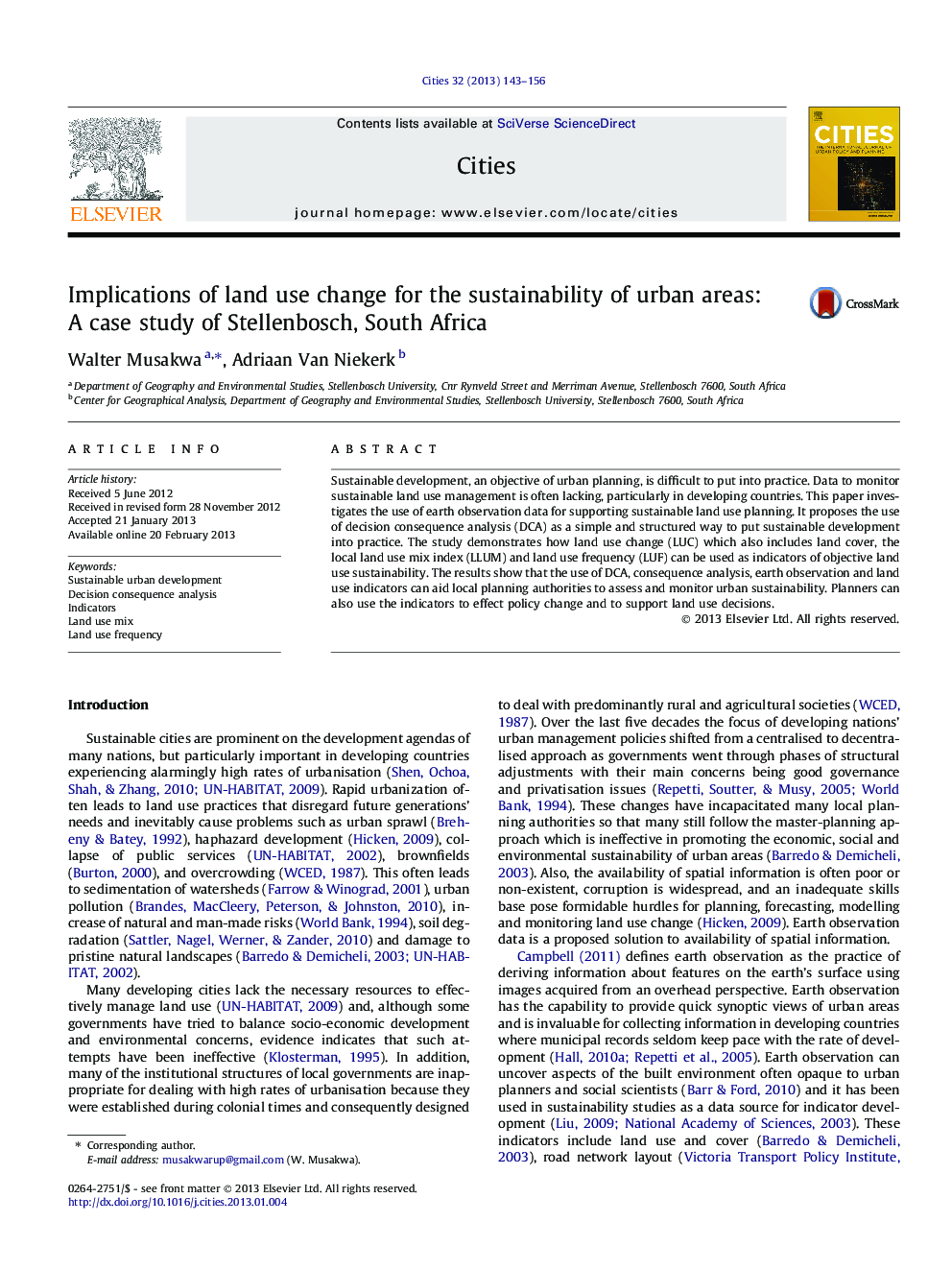| Article ID | Journal | Published Year | Pages | File Type |
|---|---|---|---|---|
| 1008421 | Cities | 2013 | 14 Pages |
Sustainable development, an objective of urban planning, is difficult to put into practice. Data to monitor sustainable land use management is often lacking, particularly in developing countries. This paper investigates the use of earth observation data for supporting sustainable land use planning. It proposes the use of decision consequence analysis (DCA) as a simple and structured way to put sustainable development into practice. The study demonstrates how land use change (LUC) which also includes land cover, the local land use mix index (LLUM) and land use frequency (LUF) can be used as indicators of objective land use sustainability. The results show that the use of DCA, consequence analysis, earth observation and land use indicators can aid local planning authorities to assess and monitor urban sustainability. Planners can also use the indicators to effect policy change and to support land use decisions.
► Land use change, land use mix, land use frequency are indicators of sustainability. ► Findings show that land use change has a bearing on sustainable urban development. ► Land use mix index portrays spatial diversity better than land use frequency. ► Land use frequency does not correspond to the local land use mix index. ► Land use change, land use frequency and land use mix facilitates decision making.
